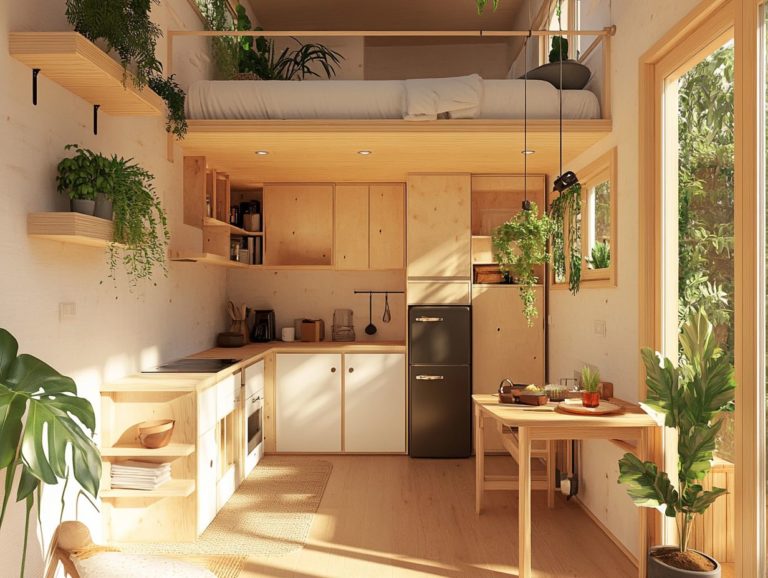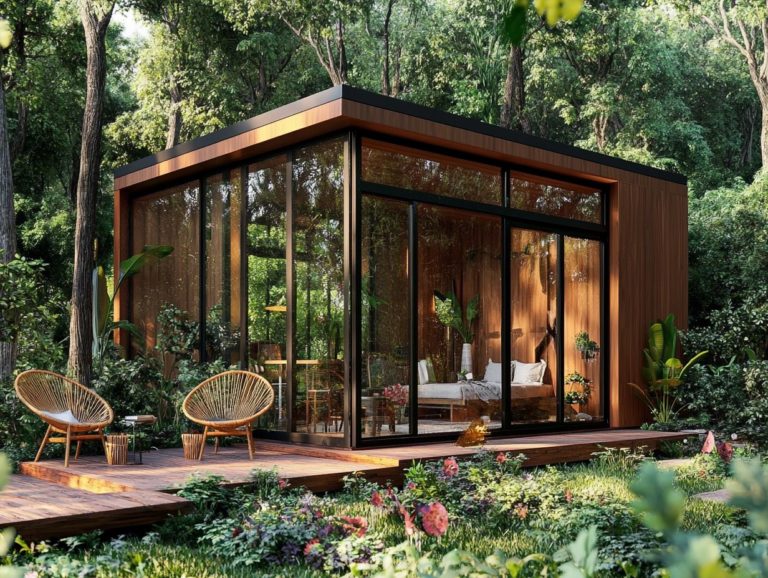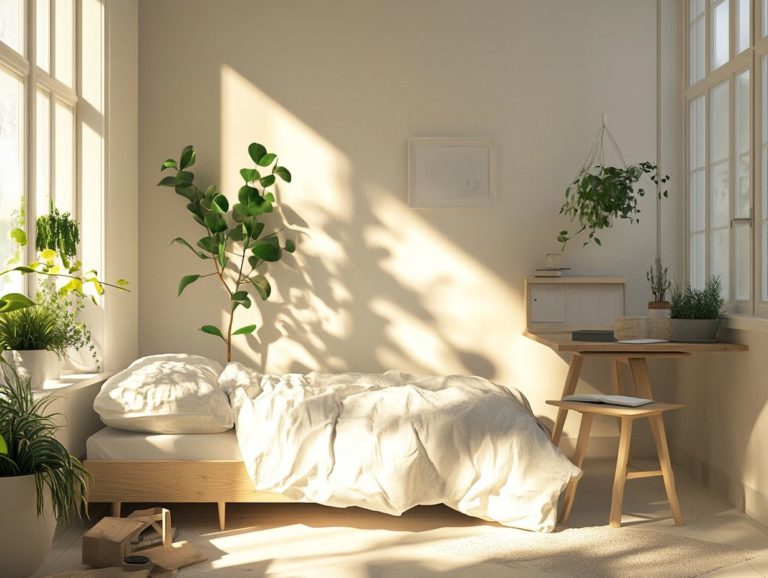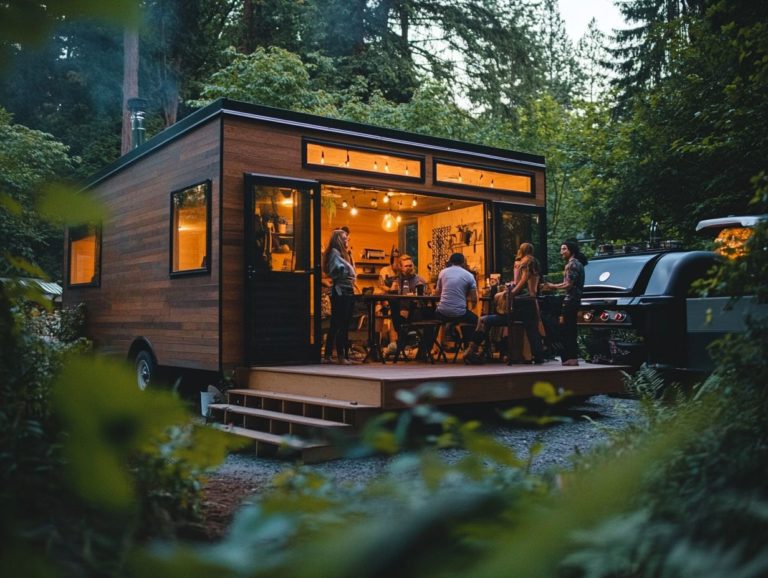What to Expect When Going Tiny
The Tiny House Movement sparks excitement, inviting you to explore a simpler life that prioritizes sustainability and financial freedom.
So, what does it truly mean to live in a tiny home? This guide delves into the many benefits, such as lower expenses and a reduced environmental impact, while also addressing the challenges that come with downsizing.
It walks you through essential preparations for this lifestyle shift, highlights crucial design considerations, and paints a vivid picture of daily life in a compact space.
Whether you re curious about tiny living or ready to transition, this guide will help you navigate your journey and determine if this lifestyle is right for you.
Contents [hide]
Key Takeaways:
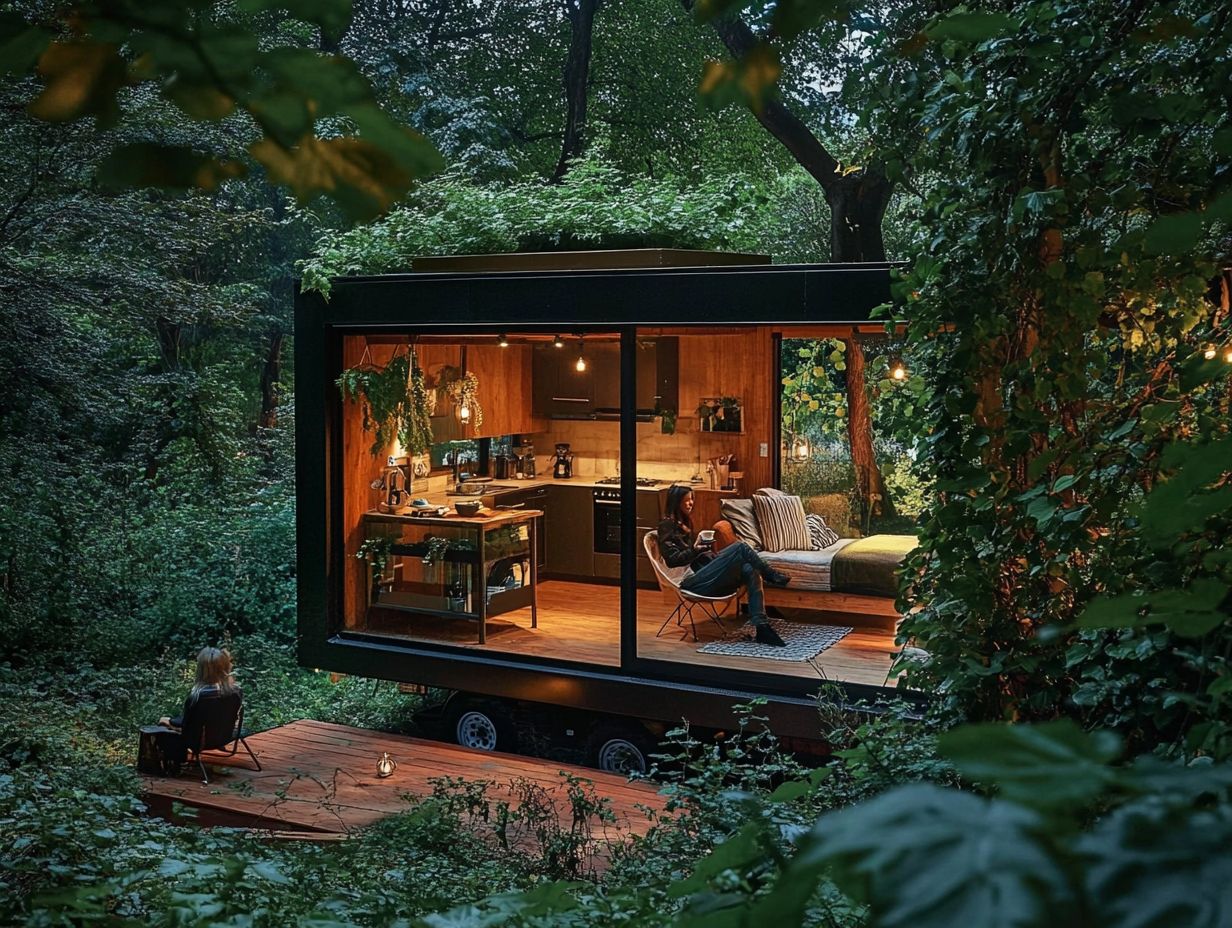
- Tiny living offers financial, environmental, and lifestyle benefits that appeal to those seeking simplicity.
- While there are many perks, tiny living also has challenges like adjusting to a smaller space.
- Consider factors like location and zoning before making the leap to tiny living.
What is the Tiny House Movement?
The Tiny House Movement is a captivating social and architectural trend that invites you to embrace simple living in homes typically under 400 square feet. This movement has emerged as a thoughtful response to the urban housing crisis and the increasing demand for affordable housing.
Enthusiasts believe that living tiny fosters financial flexibility, promotes minimalism, and nurtures a deeper connection to community living.
By downsizing your home, you can adopt a lifestyle that prioritizes sustainability and reduces environmental impact. This shift has led to the rise of tiny house communities across the country, where shared resources cultivate a sense of belonging.
Originating in the early 2000s, the Tiny House Movement has gained impressive momentum, particularly along the East Coast and in picturesque regions like the Blue Ridge Mountains. These areas have become vibrant hubs for tiny living, attracting individuals eager to break free from the constraints of traditional housing.
The philosophy behind this lifestyle places great value on savoring life s simpler pleasures while minimizing your carbon footprint. Events like the Tiny House Festival have significantly raised awareness and inspired countless others to consider this transformative approach to housing.
Benefits of Living in a Tiny Home
Embracing life in a tiny home presents a wealth of advantages that align beautifully with your personal aspirations and environmental considerations. It stands out as an enticing choice for those pursuing financial flexibility and a sustainable way of living.
Financial, Environmental, and Lifestyle Advantages
The financial, environmental, and lifestyle benefits of tiny living are truly remarkable. Homeowners often report significantly lower expenses, a smaller carbon footprint, and a more enriching life focused on experiences over material possessions.
This financial flexibility eases monetary pressures and helps reduce stress, allowing you to invest in experiences, travel, or personal growth. By choosing to downsize, you can create a home filled with thoughtfully curated design elements, like multifunctional furniture and optimized storage solutions, that embrace minimalism and efficiency.
Embracing a smaller living space leads to a notable reduction in energy consumption, benefiting the environment. The intentional lifestyle changes that come with tiny living encourage deeper connections with your community, ultimately enhancing your quality of life and fostering a greater appreciation for the simplicity and beauty that surrounds you.
Challenges of Tiny Living
While tiny living offers numerous advantages, it also presents unique challenges to consider closely.
You will need to navigate zoning laws which are rules about where you can build homes adapt to the constraints of limited space, and manage the logistics of downsizing your home.
Join the movement today! Discover how tiny living can transform your life!
Adjusting to a Smaller Space and Lifestyle
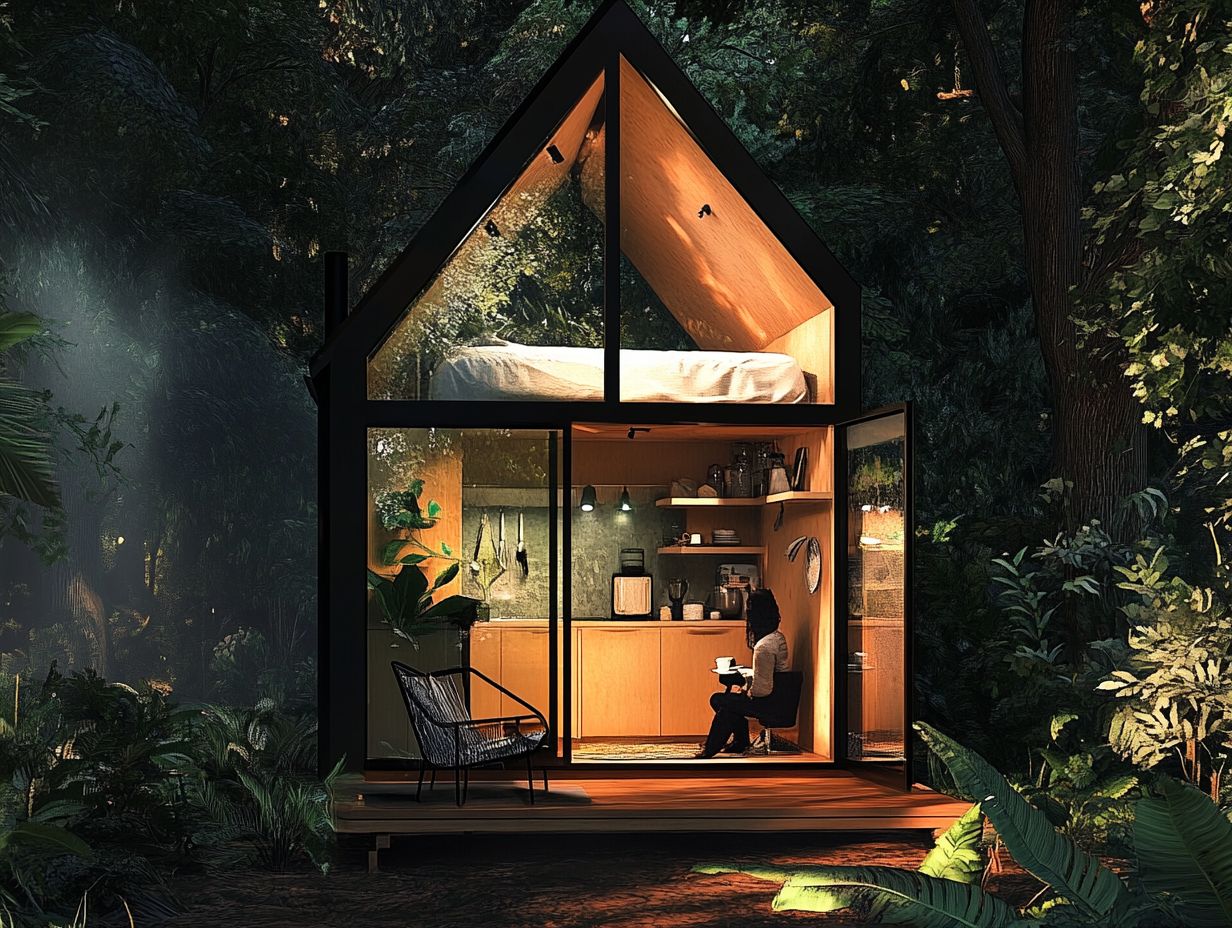
Adjusting to a smaller space and a new lifestyle can be both thrilling and overwhelming. It s all about shifting your mindset and embracing the beauty of minimalism.
Your journey often begins with the realization that prioritizing essential items is crucial. Focus on what truly adds value to your daily life.
Evaluating your possessions and letting go of the non-essential can be profoundly liberating. This brings you a sense of clarity and purpose.
Optimizing your home layout is key. Think multifunctional furniture and clever storage solutions that can drastically enhance space efficiency.
As you make this transition, you might experience a whirlwind of emotions, from fear of change to sheer joy in discovering newfound simplicity.
Tiny house communities can become your supportive network. You can share experiences, seek advice, and foster a deep sense of belonging.
This makes your shift to minimalism feel less isolating and more like a collective journey.
Preparing for a Tiny Home
Preparing for a tiny home requires careful planning and thought to ensure that your transition is seamless and aligned with your personal and financial aspirations.
Factors to Consider and Planning Tips
When you’re preparing for a tiny home, there are several crucial factors to consider, including your budget, location, home design, and your long-term goals.
Each of these elements plays a significant role in achieving both financial flexibility and personal satisfaction.
First and foremost, having a clear grasp of your construction budget is essential. Keep a close eye on costs to prevent them from escalating.
It’s wise to set aside funds for the build itself as well as for any unexpected expenses that might arise.
It s also vital to research the zoning laws in your chosen area. Some locations have specific regulations that could affect where you can place your tiny home.
By selecting a layout that aligns with your lifestyle and community standards, you can ensure that your new living space feels both functional and harmonious.
Using community resources can provide invaluable insights and support throughout your building journey.
Building and Designing a Tiny Home
Building and designing a tiny home offers you the chance to craft a personalized living space that maximizes functionality and beautifully reflects your unique style and preferences.
Embrace the exciting possibilities that come with creating a home tailored just for you!
Options and Considerations for Construction and Layout
Dive into an exciting range of choices when you explore tiny home construction. You’ll discover many options suited to your needs and environmental considerations.
This ensures that your space is not only functional but also visually appealing.
You can explore building methods (pre-fabrication techniques) that streamline construction and reduce waste, or choose traditional methods that offer durability and craftsmanship.
Creative layout strategies are essential for maximizing every inch of limited square footage. Utilize multi-functional furniture and smart storage solutions to foster an airy atmosphere.
By integrating sustainable design elements, you can elevate the overall aesthetic of your home while promoting flexible living.
This allows you to adapt your space as your lifestyle changes. Striking this balance among various approaches can help create environments that genuinely embody the essence of modern living.
Living in a Tiny Home: What to Expect
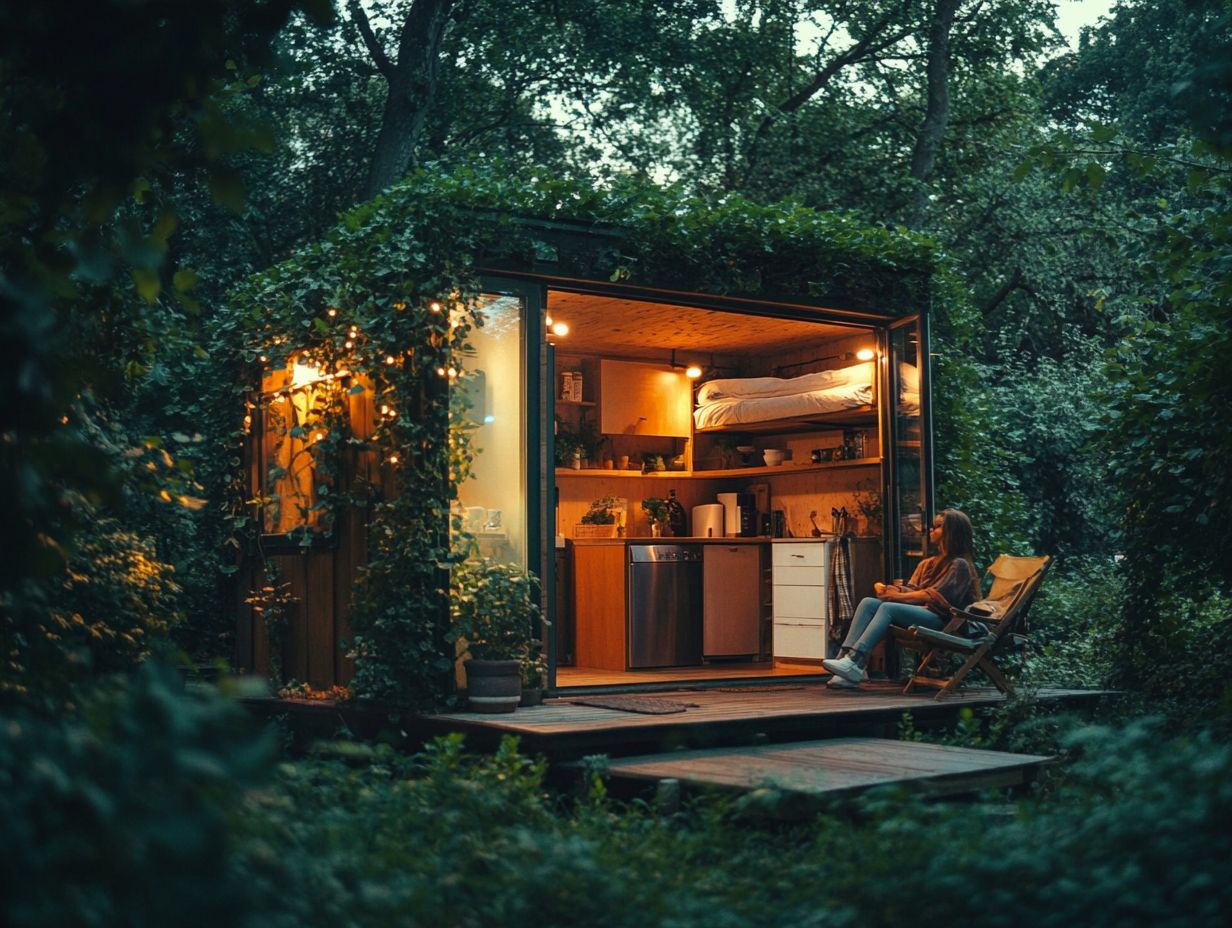
Living in a tiny home provides a distinctive experience with its own set of expectations, daily routines, and essential adjustments.
These can greatly diverge from traditional home ownership.
Embracing this lifestyle invites you to rethink space, functionality, and the essence of what truly makes a house a home.
Start your tiny living journey today! Share your experiences in the comments below and join a thriving community!
Daily Routines and Adjustments
Daily routines in a tiny home require you to be flexible and adaptable as you navigate your new space and lifestyle while fostering a vibrant sense of community.
This means you ll likely need to rethink how chores are tackled often collaborating with your neighbors to maximize efficiency. Embracing shared spaces can transform your living experience, promoting gatherings and interactions that enrich your daily life.
Meals might be prepared together, cultivating a spirit of togetherness, while shared responsibilities deepen the connections you have with those around you.
Social interactions frequently spill beyond the confines of your home, inviting you to participate in community events, workshops, and gardening done together with neighbors. These activities nurture friendships and strengthen the bonds within the tiny home community.
Ultimately, these experiences create a lifestyle filled with support, sustainability, and shared joy, turning each day into a fresh opportunity for collaboration and connection.
Is Tiny Living Right for You?
To determine if tiny living aligns with your aspirations, assess what’s important to you in life and home. Take a moment for an honest evaluation of what you truly value in home ownership and community.
Assessing Personal Needs and Preferences
Assessing your personal needs is an important step in determining whether tiny living aligns with your aspirations and goals for homeownership.
By evaluating factors like your space requirements, budget constraints, and opportunities for community involvement, you can gain a clearer understanding of how a tiny home might fit into your life. It’s essential to think about whether a compact design can accommodate your belongings and if your financial commitments support this lifestyle choice.
Engaging with local communities centered around sustainable living can offer valuable insights and support, enriching your experience of homeownership in a smaller footprint and leading to a more intentional and fulfilling way of life.
Frequently Asked Questions
What should I expect when I choose tiny living?
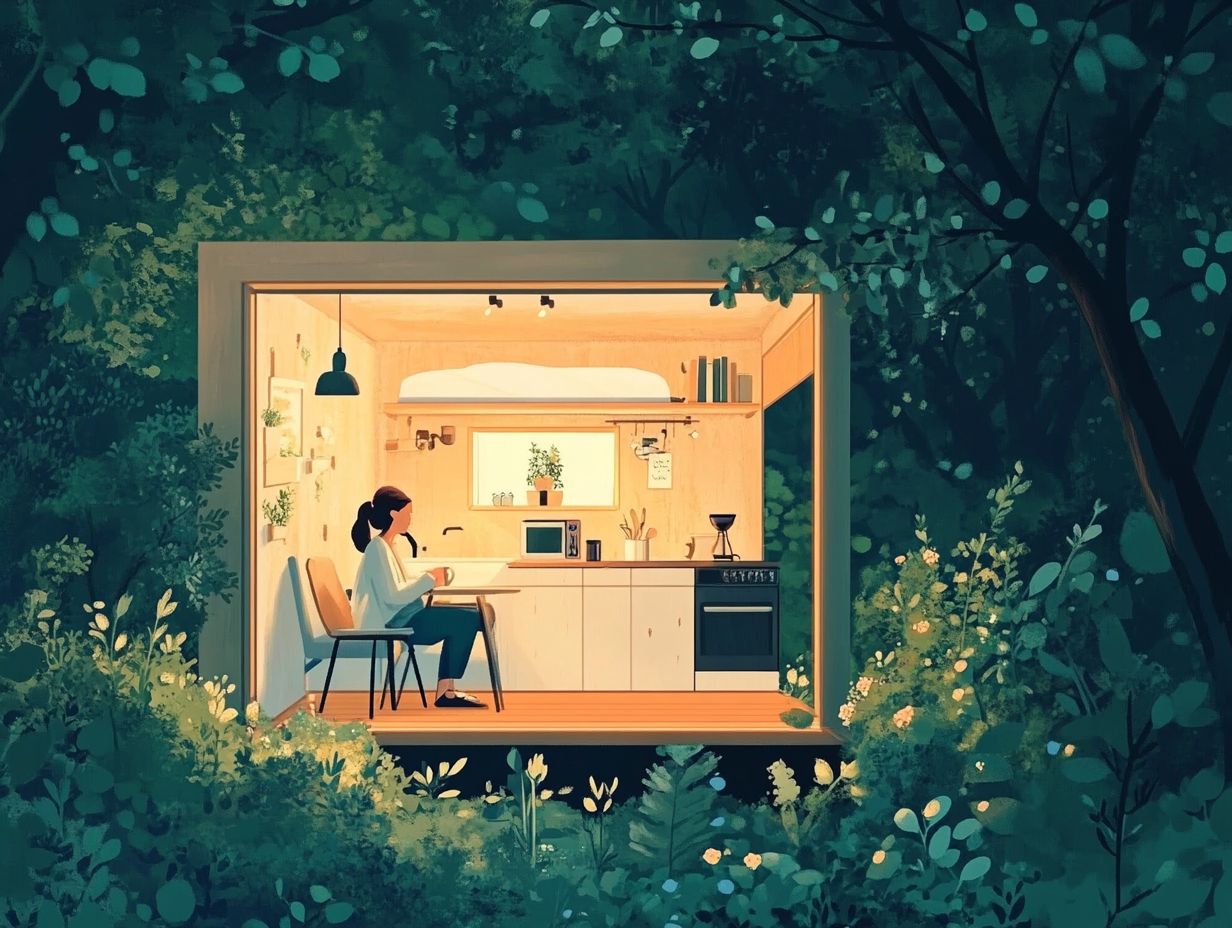
Get ready for a cozy living space that encourages a simple lifestyle!
Will I have to make sacrifices when going tiny?
Going tiny does require some sacrifices, such as downsizing your belongings and adjusting to a smaller space. Many discover that the perks of tiny living far surpass the sacrifices!
What are the benefits of going tiny?
- Lower living expenses
- Reduced environmental impact
- More freedom to travel
- A simpler and more intentional lifestyle
How can I prepare for the transition to tiny living?
To prepare for going tiny, start by decluttering and downsizing your belongings. Explore different tiny home designs and layouts now, and consider the logistics of living in a smaller space.
What are some common challenges faced when going tiny?
Some common challenges of tiny living include adjusting to a smaller space, finding suitable parking or land, and dealing with limited storage and amenities.
Is tiny living suitable for families?
Yes, tiny living can be suitable for families, but it may require some creative solutions and adjustments. Many families have successfully transitioned to tiny living and found a simpler and more fulfilling lifestyle!

